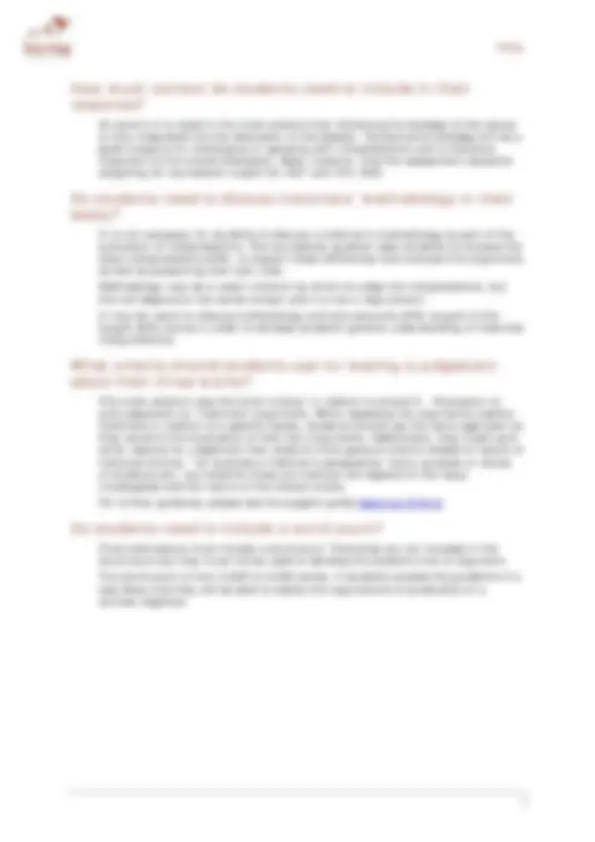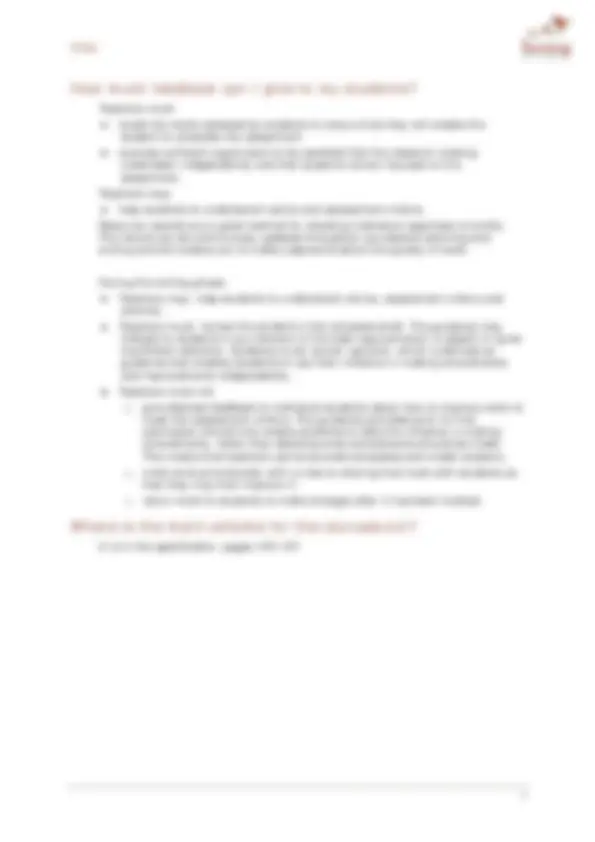





Study with the several resources on Docsity

Earn points by helping other students or get them with a premium plan


Prepare for your exams
Study with the several resources on Docsity

Earn points to download
Earn points by helping other students or get them with a premium plan
Community
Ask the community for help and clear up your study doubts
Discover the best universities in your country according to Docsity users
Free resources
Download our free guides on studying techniques, anxiety management strategies, and thesis advice from Docsity tutors
The coursework question asks students to analyse the ways interpretations differ, to explain these differences and evaluate the arguments as well as presenting ...
Typology: Lecture notes
1 / 6

This page cannot be seen from the preview
Don't miss anything!




Yes, as long as you have a suitable range of works for your cohort to enable them to produce individual responses. Where all students are following the same topic area, they should not all be evaluating the same three chapters, articles, etc. Students must exercise their own judgement in selecting which resources to use and deciding how to use them.
No, it is not compulsory to submit coursework proposals for approval. An advisory service is provided for guidance only.
Because students must use at least three substantial works of article or chapter length from three different historians, it is understandable that a school may not be able to provide equal access to enough books for a whole cohort to use. In such cases, it is acceptable for teachers to produce a bank of resources for students to select from. However, teachers should be aware that the History subject criteria require students to carry out a historical enquiry that is independently researched. Any bank of resources provided by the teacher must therefore contain a sufficiently wide range of resources in order to ensure that students are able to exercise individual judgement over their choice of works and historians. The purpose of such a resource bank must therefore be to make a sufficient number of resources available to all students in a cohort, rather than to do the research for the students. Teachers must use their professional judgement to decide what constitutes a sufficiently wide range to ensure an appropriately diverse selection of works which will enable students to carry out independent research and exercise independent judgement when choosing historians’ works. It is not acceptable for all students in the same cohort to use the same three works. It may be that individual students within a cohort end up choosing the same three works; however, we would expect to see evidence in the student's resource record sheet that a range of resources has been consulted and that the students have independently selected the historians’ works.
Students’ chosen works must be substantial enough to support the assignment, and it is recommended that they are of article or chapter length (they may also be electronic or audio-visual format). The works should contain interpretations that together contain a range of views or emphases. An article by an historian for a sixth-form publication may be used, as well as one published in a scholarly journal. Historians such as Andrew Marr may be suitable if they present a distinct scholarly interpretation, but if you are unsure, it is best to contact the advisory service. One test is whether the work is appropriately referenced and draws on the work of other historians in advancing arguments and reaching conclusions rather than being a personal account.
At Level 5 it is noted in the mark scheme that ‘Contextual knowledge of the issues is fully integrated into the discussion of the debate.’ Contextual knowledge will be a good measure for challenging or agreeing with interpretations and is therefore important to the overall discussion. Note, however, that the assessment objective weighting for coursework is split 5% AO1 and 15% AO3.
It is not necessary for students to discuss a historian’s methodology as part of the evaluation of interpretations. The coursework question asks students to analyse the ways interpretations differ, to explain these differences and evaluate the arguments as well as presenting their own view. Methodology may be a useful criterion by which to judge the interpretations, but this will depend on the works chosen and it is not a requirement. It may be useful to discuss methodology and why accounts differ as part of the taught skills course in order to develop students’ general understanding of historical interpretations.
The mark scheme uses the word ‘criteria’ in relation to strand 4 – Evaluation of, and judgement on, historians’ arguments. When assessing the arguments used by historians in relation to a specific issues, students should use the same approach as they would to the evaluation of their own arguments. Additionally, they might give other reasons for judgement that relate to more general criteria related to nature of historical writing – for example a historian’s perspective, focus, purpose or choice of evidence etc., but whether these are relevant will depend on the issue investigated and the nature of the chosen works. For further guidance, please see the support guide Applying Criteria.
Final submissions must include a word count. Footnotes are not included in the word count but they must not be used to develop the student’s line of argument. The word count is from 3,000 to 4,000 words. If students exceed this guideline it is less likely that they will be able to satisfy the requirement of production of a concise response.
Teachers must: ● check the works selected by students to ensure that they will enable the student to complete the assignment ● exercise sufficient supervision to be satisfied that the research is being undertaken independently and that students remain focused on the assignment. Teachers may: ● help students to understand rubrics and assessment criteria. Resource records are a good method for checking individual responses to works. The record can be continuously updated throughout coursework planning and writing and will enable you to make judgments about the quality of work.
During the writing phase: ● Teachers may: help students to understand rubrics, assessment criteria and controls. ● Teachers must: review the student’s first complete draft. The guidance may indicate to students if any element of the task requirements1 is absent or given insufficient attention. Guidance must remain ‘general’, which is defined as guidance that enables students to use their initiative in making amendments and improvements independently. ● Teachers must not: o give detailed feedback to individual students about how to improve work to meet the assessment criteria. The guidance provided prior to final submission should only enable students to take the initiative in making amendments, rather than detailing what amendments should be made. This means that teachers cannot provide templates and model answers. o mark work provisionally with a view to sharing that mark with students so that they may then improve it. o return work to students to make changes after it has been marked.
It is in the specification, pages 125-127.